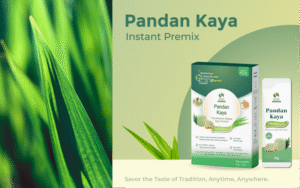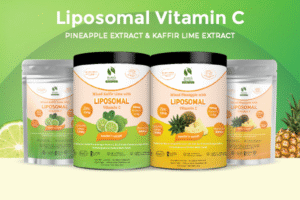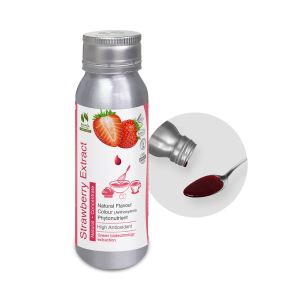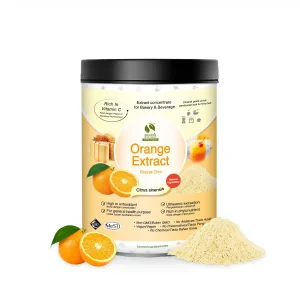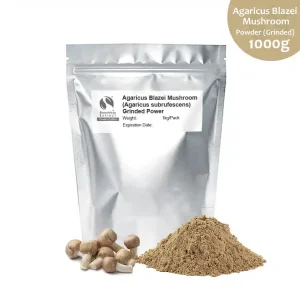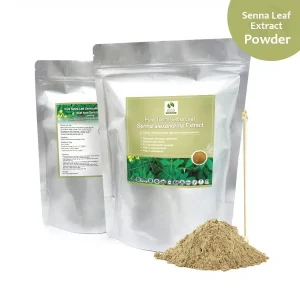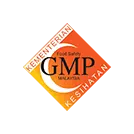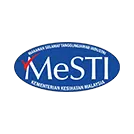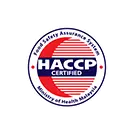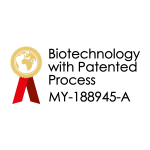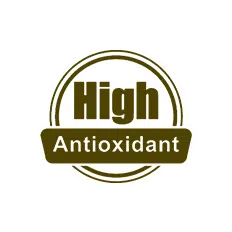Dandelion
Taraxacum officinale
Family: Asteraceae
By
Introduction
Dandelion is a low-growing perennial herb with a rosette of jaggedly toothed leaves and a thick tap root.1 The solitary yellow ray flowers, with their strap-shaped petals, grow directly from the center of the rosette on a green or purplish stem. The flower is composed of hundreds of florets, each of which forms a seed that is attached to a pappus, a hair-like parachute which aids in seed dispersal.1 Present throughout the plant is a bitter, milky latex.2
Dandelion is known by the Latin binomial Taraxacum officinale, although one authoritative source suggests that the accepted name should be changed to T. campylodes.3 The Plant List (Version 1.1) cites “T. campylodes G.E.Haglund” as the accepted name and “T. officinale (L.) Weber ex F.H.Wigg.” as a synonym. The Plant List assigns only a medium confidence level to this classification. All known official compendia describe dandelion as T. officinale and make no reference to T. campylodes.
The genus name, Taraxacum, was once thought to be derived from the Greek words taraxos (“disorder”) and akos (“pain”).1 It is now thought to derive from Persian, tarkhashqún (“bitter endive”), or via Arabic from the Persian words talk (“bitter”) and čakūk (“purslane”).4,5 It is commonly believed that the name “dandelion” came from the French dent-de-lion (“lion’s tooth”) via the medieval Latin dens leonis, which refers to the jagged shape of the leaf margins.5
While dandelion has naturalized throughout much of the world, the species is native to northern temperate zones, including most of Europe, parts of northern Africa (e.g., Morocco), and parts of Asia (mainly western Asia).1,6
The material of commerce is primarily wild-collected in eastern European countries, including Poland, Bulgaria, Bosnia and Herzegovina,7 Albania,8 Croatia,9 Hungary,10 and Romania.11 There is also some commercial cultivation of T. officinale in Germany and Poland,12 as well as in the United Kingdom and United States. Due to recent significant increases in market demand, dandelion that is wild-collected in the northeastern part (i.e., the Oriental region) of Morocco (likely T. officinale subsp. obovatum, syn. T. obovatum) and in parts of China (likely T. mongolicum) has entered US commerce represented as common dandelion.
This article addresses only T. officinale, widely used in Western medical herbalism, and does not address the other dandelions, in particular those native to East Asia that are used in Asian systems of medicine such as Chinese dandelion (T. sinicum), Korean dandelion (T. platycarpum), Mongolian dandelion (T. mongolicum), and Taiwan dandelion (T. formosanum).13-15
History and Cultural Significance
The 17th century British botanist, herbalist, and physician Nicholas Culpeper, in his Complete Herbal, wrote that dandelion leaf and root have an “opening and cleansing quality” and are effective for the promotion of urination; treatment of obstructions and diseases of the liver, gallbladder, and spleen; promotion of rest and sleep in fevered persons; cleansing and healing of abscesses and ulcers of the urinary passage; and assisting in generally poor health with emaciation.16 In England and Ireland, dandelion was once used almost as widely as elder (Sambucus nigra, Adoxaceae), nettles (Urtica dioica, Urticaceae), and dock (Rumex spp., Polygonaceae).17 Primary uses included the treatment of coughs, colds, and other respiratory problems; the increase of urine production; and “cleansing the blood” to address boils and other skin complaints. The milky latex was also used externally for wart removal.17 Dandelion was used in Ireland for cuts, diabetes, fractures, functional liver disorders, nervousness, dermatosis (noninflammatory skin disorders), sore eyes, sprains, swelling, thrush (an infection caused by the fungus Candida albicans), and tuberculosis.18
Dandelion has Persian and East Indian ethnobotanical uses as a mild laxative and appetite stimulant, and for the treatment of urinary problems, liver conditions, and digestive issues. It also has been used orally to treat snakebites and externally for wounds, boils, sprains, and swelling.19 Ethnobotanist James A. Duke, PhD, referring to Harold and Alma Moldenke’s Plants of the Bible (Chronica Botanica Company, 1952), suggests that dandelion may have been one of the bitter herbs of the Old Testament; that it is used in India as a hepatic stimulant and for dyspepsia, hepatitis, and jaundice; and that it is used in Lebanon as a laxative or purgative.18
Introduced and naturalized to parts of North America, various Native American tribes consumed dandelion greens for food and as a tonic to purify the blood; used a dandelion leaf poultice for slow-healing wounds, stomachache, and sore throat; drank a decoction or infusion of young leaves or flowers for menstrual cramps; drank a decoction or infusion of the roots for stomach pain, blood purification, to produce postpartum milk flow, as an emetic, and as an “anti-witch medicine” and “love medicine”; and used either the whole plant or an unspecified part of the plant as a “laxative-tonic,” for pain, anemia, liver spots, edema, kidney ailments, and smashed or swollen testicles.20
Early 19th century Eclectic physicians used dandelion root extract as a tonic, diuretic, and aperient (to relieve constipation); for conditions of the liver, spleen, and kidneys; and for edema.21 Additionally, a root extract was used as a cholagogue (to discharge bile); in chronic jaundice; for rheumatism, blood disorders, skin problems, mouth ulcers, and gastritis; and to stimulate the stomach.22The British Herbal Compendium described bitter (a medicinal substance that promotes appetite or digestion), mild laxative, and cholagogue effects, while the British Herbal Pharmacopoeia noted dandelion’s beneficial effect on the liver.23
Dandelion leaves have long been eaten as a spring green, usually when freshly sprouted, tender, and less bitter than older leaves. Dandelion is especially valued by the French who have turned cultivating choice salad varieties into an art.24 It is a good source of vitamins, minerals, and nutrients, particularly vitamins A and K, and potassium.25 It is widely believed that dandelion’s ability to replace potassium lost through diuresis is what makes it an effective diuretic, especially in cases of heart disease.26 In 1982, the US Food and Drug Administration (FDA) proposed the inclusion of dandelion root as a diuretic active ingredient in its establishment of a monograph for over-the-counter (OTC) drug products for dysmenorrhea.27 In 1988, in a subsequent “tentative final monograph” for OTC menstrual drug products, dandelion remained listed in category IIE, meaning that it was determined to be safe but lacked sufficient evidence of efficacy for the intended use.28 Four years later, the FDA proposed that dandelion should be classified as not generally recognized as safe and effective (GRASE) for use as a diuretic menstrual active ingredient and passed a final ruling to that effect in 1993.29,30 Following the passage of the Dietary Supplement Health and Education Act of 1994 (DSHEA), the last remaining OTC drug products that had been labeled with dandelion as an active ingredient transitioned to the newly established dietary supplement framework.
In 1984, the German Commission E approved the use of dandelion root with herb (prepared as an herbal tea infusion, a decoction, or a tincture) as a nonprescription medicine for treating disturbances of bile flow, for stimulating diuresis, and for treating loss of appetite and dyspepsia.31 In 1992, the Commission E approved the use of dandelion herb for treating loss of appetite, dyspepsia, bloating, and flatulence.31 Now, official national labeling standards monographs of European Union (EU) member states, such as those of the German Commission E, have been superseded by monographs of the European Medicines Agency (EMA).
Until recently, official quality standards monographs for dandelion were not available in English. Prior to the admission of dandelion into the European Pharmacopoeia in 2009, companies established quality specifications based on German-language monographs of the Austrian Pharmacopoeia (Taraxaci radix ÖAB) or the German Drug Codex (Taraxaci herba cum radice DAC), or on the Russian-language monograph of the State Pharmacopoeia of the Union of Soviet Socialist Republics (Radices Taraxaci CCCP), or on an unofficial monograph such as the British Herbal Medicine Association’s British Herbal Pharmacopoeia (Taraxaci radix BHP).32-35
Today, there are English-language quality standards monographs established by the European Directorate for the Quality of Medicines (EDQM) for different plant parts (Taraxaci officinalis radix PhEur and Taraxaci officinalis herba cum radice PhEur), with corresponding labeling standards monographs established by the EMA.36-39 The EDQM and EMA monographs are applicable to product registration applicants in EU member states and in non-EU countries that recognize European standards, such as Australia and Canada, among others. Presently, there are no official standards for dandelion available in the United States Pharmacopeia (USP) or the United States Code of Federal Regulations (CFR).
Current Authorized Uses in Cosmetics, Foods, and Medicines
Extracts of dandelion, T. officinale and T. laevigatum (syn. T. erythrospermum), are classified as generally recognized as safe (GRAS) for use in food products in the US.40 Dandelion plant parts or extracts thereof are also permitted as dietary supplement ingredients, requiring FDA notification within 30 days of marketing (if a so-called “structure-function claim” is made) and product manufacturing according to dietary supplement current Good Manufacturing Practices (cGMPs).41
In Canada, dandelion is regulated as an active ingredient of licensed natural health products (NHPs), requiring pre-marketing authorization from the Natural and Non-prescription Health Products Directorate (NNHPD).42,43 The authorized uses for labeling of dandelion NHPs vary somewhat depending on the plant part(s). In general, dandelion leaf, dandelion root, and dandelion root with herb preparations (e.g., powdered plant parts, herbal tea infusions or decoctions, fluid extracts or tinctures, and fresh-pressed plant juices) may be labeled with indications for use including as a diuretic, laxative, to help increase bile flow (cholagogue and choleretic), and to help treat digestive disturbances (dyspepsia). Additionally, dandelion leaf and dandelion root with herb preparations may be labeled with the claim statement: “traditionally used in Herbal Medicine to increase the amount of urine to achieve flushing of the urinary tract as an adjuvant in minor urinary complaints.” Dandelion root preparations may be labeled with the additional claim statements: “used in Herbal Medicine as an alterative to help relieve dermatological conditions, such as eczema” and “used in Herbal Medicine to help stimulate appetite.”
In the EU, various defined preparations of dandelion leaf, dandelion root, and dandelion root with herb are regulated as traditional herbal medicinal products (THMPs), requiring registration and pre-marketing authorization.39 The EU approves the following therapeutic indications for dandelion root with herb, prepared in dosage forms of herbal tea, dry or liquid extract, or fresh expressed juice: “for the relief of symptoms related to mild digestive disorders (such as feeling of abdominal fullness, flatulence, and slow digestion) and temporary loss of appetite”; and “to increase the amount of urine to achieve flushing of the urinary tract as an adjuvant in minor urinary complaints.”
Modern Research
Dandelion root contains carbohydrates, carotenoids, diterpenes, fatty acids, flavonoids, phenolic acids, phytosterols, polysaccharides, sesquiterpene lactones, and triterpenes, in addition to vitamins and minerals.23,44 Dandelion leaf contains primarily phenolic compounds and potassium (up to 4.5%, or 30.4-47.7 mg/g).39,44
In vitro and animal studies have shown various dandelion preparations to be anti-inflammatory,45-48 anti-angiogenic (stops tumors from growing blood vessels, which is one way to impede tumor growth),45 antinociceptive (reduces sensitivity to pain),45 antitumor,49 antiproliferative (prevents or retards cell growth),50-52 antioxidant,47,52-54 cytotoxic,55 antiviral,56 antiretroviral,57 prebiotic,58 antimicrobial,54,59 and antibacterial.60,61 It has also been found to stimulate the secretion of insulin,54 induce apoptosis (programmed cell death) in dysfunctional cells (e.g., tumor cells),62-65 and inhibit lipid and triglyceride accumulation.66
The historical uses of dandelion in traditional medicine systems addressed above, along with contemporary phytochemical analyses and pharmacological investigations, support many of its modern therapeutic uses. Unfortunately, there is very little human clinical evidence of the plant’s physiological benefits. A 2009 uncontrolled pilot study investigated dandelion leaf ethanolic extract (1 g/1 mL 95% ethanol; Oregon’s Wild Harvest; Sandy, Oregon) to see if it increased urinary frequency and volume.67 On the first day of the study only, participants (N = 17) self-administered 8-mL doses of dandelion extract at 8:00 am, 1:00 pm, and 6:00 pm, and recorded their fluid intake and urine output for the next three days. The subjects experienced a significant increase in urination frequency (P < 0.05) and urine excretion (P < 0.001) from baseline. Specifically, frequency increased in the five-hour period following the first dose, and output increased during the five-hour period following the second dose; there were no significant changes following the third dose. The authors recommended that double-blind, placebo-controlled trials with a larger number of participants and more objective measurements be conducted to confirm and expand upon the findings of this study.
Researchers at the University of Windsor (Windsor, Ontario, Canada), who previously studied dandelion’s apoptosis effects,56-59 received approval from Health Canada in early 2015 to study dandelion root extract as a treatment for patients with end-stage blood-related cancers, including lymphoma and leukemia.68,69 The results of their investigations were not available at the time of this writing (January 2016).
The remaining clinical studies on dandelion are on combination products. One 2010 study investigated the effects on functional dyspepsia symptoms in participants taking a combination of extracts with known hepatoprotective effects (Cinarepa; 179 mg cardoon [Cynara scolymus, Asteraceae] leaf and flower containing 15% chlorogenic acid, 75 mg dandelion root containing 2% inulin, 50 mg turmeric [Curcuma longa, Zingiberaceae] rhizome standardized to 95% curcumin, and 25 mg microencapsulated rosemary [Rosmarinus officinalis, Lamiaceae] bud essential oil; Cristalfarma; Milan, Italy).70 Patients (N = 305) took two capsules of Cinarepa each day for 60 days. Statistically significant reductions in symptom severity were noted at day 30, and further improvements were noted at day 60.
In a randomized, placebo-controlled, parallel-arm, pilot study published in 2007, two naturopathic interventions were studied for their effects on sex steroid hormones and metabolic markers in 40 healthy premenopausal women over five menstrual cycles.71 The first group (n = 15) consumed a combination botanical supplement containing 100 mg turmeric root extract standardized to 95% curcumin; 100 mg artichoke leaf extract [6:1]; 100 mg rosemary leaf extract [5:1]; 100 mg dandelion root extract [4:1]; 50 mg schisandra [Schisandra chinensis, Schisandraceae]; and 100 mg milk thistle [Silybum marianum, Asteraceae] seed extract standardized to 80% silybin, silychristin, silydianin, and silymarin (Vital Nutrients; Middletown, Connecticut). The second group (n = 15) consumed a placebo pill, and the third group (n = 10) was asked to follow a diet based on standard naturopathic clinical practice (certain quantities of leafy greens, fiber, and water, with limited amounts of alcohol and caffeine). While there were no statistically significant changes when comparing dietary changes with placebo, the botanical supplement significantly decreased the hormones dehydroepiandrosterone, dehydroepiandrosterone-sulfate, androstenedione, and estrone-sulfate in the early follicular phase, compared with placebo. The authors state that the biological significance and clinical relevance of these changes are unknown, and that the results need to be confirmed by larger studies.
Future Outlook
Dandelion herb, aerial parts, leaf, and/or root are featured components of top-selling dietary supplement products in the detoxification and liver-cleanse categories. Although dandelion was not included in the 2014 herbal dietary supplement market report in HerbalGram issue 107 — mainly because dietary supplements in the form of herbal teas were excluded from the data72 — the 2014 HerbalGram tea market report ranked dandelion as the fourth top-selling botanical in the herbal medicinal tea category (teas sold as dietary supplements) with retail sales of more than $13 million in 2014, an increase of approximately $3.5 million from the previous year.73 Also in 2014, in the beverage tea category, dandelion ranked 11th in sales, moving up from 2013 when it did not make the top 20.
Over the past five years, dandelion-based dietary supplements have become top-sellers for many herbal tea brands, causing, in some cases, considerable difficulty in sourcing sufficient quantities from traditional sources in eastern Europe. This increased popularity has led to a number of supply chain problems that may be associated with media-influenced boom-and-bust cycles. Most herbal roots, including dandelion, are wild-collected in the fall until the first freeze or snowfall. A significant spike in market demand in 2012 caused all carry-over stocks to be sold before the 2013 fall harvest and encouraged spring and summer wild-collection of roots throughout Europe. Notably, early harvesting can impact the phytochemical composition of the collected roots, since inulin content has been shown to vary substantially from spring (about 2%) to fall (approximately 40%).44 The new demand that exceeded available supply also led to a number of developments, including wild collection occurring in new areas where wild dandelion had not been commercialized before, east Asian species of dandelion (e.g., T. mongolicum) entering the market misrepresented as T. officinale, and farmers in parts of Africa, Europe, and North America being encouraged to plant dandelion as a new economic crop. Dandelion easily escapes from cultivation and is considered by some ecologists and national authorities to be invasive, especially in alpine areas. Some cultivation trials were halted by regional authorities for these reasons.
Although market demand for dandelion-based products appears to be at an all-time high, it is difficult to predict the current position in the boom-and-bust cycle, or if the health benefits of dandelion will be strong enough to command lasting popularity as an essential medicinal plant. For global market demand to persist at the current level, there will be a need for the implementation of rigorous resource management plans for the controlled and sustainable wild-collection of dandelion plant parts from the fields, meadows, and forest edges of Europe where rural people collect it for additional household income. Dandelion is, of course, not the only plant growing in the collection areas, so protection of the whole ecosystem is important for sustainable resource management and predictable annual yields from controlled areas.
Farms that have decided to scale up dandelion cultivation will likely continue to enjoy robust sales, especially if they can produce a quality that is comparable to wild dandelion. There is strong evidence that the increasing dandelion production is happening through sustainable wild-collection and sustainable agriculture. Cultivated certified organic dandelion is presently coming to market from well-established farms in Germany, the UK, and the US, and many wild-collection operations have implemented the “organic wild-crop harvesting practice standard” for certified organic wild dandelion, particularly in Poland, Albania, Bosnia and Herzegovina, Bulgaria, Hungary, and Morocco. Some of the organic wild dandelion operations have also implemented the more rigorous FairWild Standard for dandelion production, which includes not only criteria for ecological sustainability, but also for economic and social sustainability for the harvesters and their communities.
Editor’s note: The information in the final three paragraphs is based entirely on the direct experience and market intelligence knowledge of one of the authors (JB).
—Gayle Engels and Josef Brinckmann
References
- Grieve M. A Modern Herbal. Vol. 2. New York, NY: Dover Books; 1971.
- Elpel T. Botany in a Day: The Patterns Method of Plant Identification. 6th ed. Pony, MT: Hops Press, 2013.
- Taraxacum campylodes. The Plant List website. Available at: www.theplantlist.org/tpl1.1/record/gcc-49669. Accessed November 28, 2015.
- Taraxacum. The Word Reference.com website. Available at: www.wordreference.com/definition/taraxacum. Accessed December 28, 2015.
- Taraxacum. Oxford Dictionaries website. Available at: www.oxforddictionaries.com/us/definition/american_english/taraxacum. Accessed December 28, 2015.
- USDA National Plant Germplasm System. Available at: https://npgsweb.ars-grin.gov/gringlobal/taxonomydetail.aspx?80051. Accessed November 28, 2015.
- FairWild Foundation. FairWild-certified ingredients under production: Last updated: November 9, 2015. Cambridge, UK: FairWild Foundation. Available at: www.fairwild.org/publication-downloads/other-documents/FairWild_species_products.pdf. Accessed November 28, 2015.
- Torres-Londoño P, Doka D, Becker H. Die Wildsammlung von Arznei- und Gewürzpflanzen in Albanien, untersucht an Beispielen aus dem Umland von Peshkopi (Region Dibër). Zeitschrift für Arznei- & Gewürzpflanzen.
- Kathe W, Honnef S, Heym A. Medicinal and Aromatic Plants in Albania, Bosnia-Herzegovina, Bulgaria, Croatia and Romania. Bonn, Germany: German Federal Agency for Nature Conservation. 2003. Available at: www.bfn.de/fileadmin/MDB/documents/skript91.pdf. Accessed November 28, 2015.
- Rodina K. Implementation of FairWild certification scheme in Hungary. TRAFFIC Factsheet. April 2015.
- MedPlaNet. Marketing study – final report. Bucharest, Romania: MedPlaNet Romania. 2013.
- Jambor J. Gemeiner Löwenzahn (Taraxacum officinale sensu auct. non Wiggers). In: Hoppe B, et al. Handbuch des Arznei- und Gewürzpflanzenbaus, Band 5. Bernburg, Germany: Verein für Arznei- und Gewürzpflanzen SALUPLANTA e.V. 2013;66-72.
- Chinese Pharmacopoeia Commission. Taraxaci Herba. In: Pharmacopoeia of the People’s Republic of China. Beijing, China: China Medical Science Press; 2010;434-435.
- Korea Food and Drug Administration. Taraxaci Herba. In: The Korean Herbal Pharmacopoeia. 4th ed. (KHP IV). Seoul: Korea Food and Drug Administration. 2002;184-185.
- Committee of Chinese Medicine and Pharmacy, Department of Health. Taraxaci Herba. In: Taiwan Herbal Pharmacopeia. 2nd ed. Taipei: Department of Health, Executive Yuan of Republic of China Press: 2013;268-269.
- Culpeper N. Culpeper’s Complete Herbal. London, UK: Bloomsbury Books; 1992.
- Allen DE, Hatfield G. Medicinal Plants in Folk Tradition: An Ethnobotany of Britain and Ireland. Portland, OR: Timber Press; 2004.
- Duke JA. Duke’s Handbook of Medicinal Plants of the Bible. Boca Raton, FL: CRC Press; 2008.
- Sharma PK, Lal B. Ethnobotanical notes on some medicinal and aromatic plants of Himachal Pradesh. Indian Journal of Traditional Knowledge. October 2005;4(4):424-428.
- Moerman D. Taraxacum officinale. Native American Ethnobotany Database. Available at: http://herb.umd.umich.edu. Accessed December 28, 2015.
- Felter HW. King’s American Dispensatory. Vol. 1.Cincinnati, OH: The Ohio Valley Company; 1905.
- Ellingwood F, Lloyd JU. American Materia Medica: Therapeutics and Pharmacognosy. Chicago, IL: Ellingwood’s Therapeutist; 1915.
- Blumenthal M, Goldberg A, Brinckmann J, eds. Herbal Medicine: Expanded Commission E Monographs. Austin, TX: American Botanical Council; Newton, MA: Integrative Medicine Communications; 2000.
- Scott TL. Invasive Plant Medicine: The Ecological Benefits and Healing Abilities of Invasives. Rochester, VT: Healing Arts Press; 2010.
- Dandelion greens, raw. USDA National Nutrient Database for Standard Reference Release 28. Available at: http://ndb.nal.usda.gov/ndb/foods/show/2960. Accessed December 28, 2015.
- Hoffmann D. Medical Herbalism: The Science and Practice of Herbal Medicine. Rochester, VT: Healing Arts Press; 2003.
- US Food and Drug Administration (FDA). Orally administered menstrual drug products for over-the-counter human use. Establishment of a monograph. Federal Register. December 7, 1982;47(235):55076-55101.
- US Food and Drug Administration (FDA). Orally administered menstrual drug products for over-the-counter human use. Tentative final monograph. Federal Register. November 16, 1988;53(221):446194-46202.
- US Food and Drug Administration (FDA). 21 CFR Part 310. Status of certain additional over-the-counter drug Category II and III active ingredients. Notice of proposed rulemaking. Federal Register. August 25, 1992;57(165):38568-38575.
- US Food and Drug Administration (FDA). 21 CFR Part 310. Status of certain additional over-the-counter drug Category II and III active ingredients; Final rule. Federal Register. May 10, 1993;58(88):27443-27650.
- Blumenthal M, Busse WR, Goldberg A, et al., eds. Klein S, Rister RS, trans. The Complete German Commission E Monographs: Therapeutic Guide to Herbal Medicines. Austin, TX: American Botanical Council; Boston, MA: Integrative Medicine Communication; 1998.
- Österreichische Arzneibuchkommission. Radix Taraxaci – Löwenzahnwurzel. In: Österreichisches Arzneibuch, Amtliche Ausgabe 2008 (ÖAB 2008). Wien, Austria: Verlag Österreich. 2007.
- Kommission Deutscher Arzneimittel-Codex. Löwenzahn – Taraxaci herba cum radice. In: Deutscher Arzneimittel-Codex, Ergänzungsbuch zum Arzneibuch. Stuttgart, Germany: Deutscher Apotheker Verlag. 1998.
- Russian Pharmacopoeia Committee. Radices Taraxaci. In: State Pharmacopoeia of the Union of Soviet Socialist Republics [in Russian]. 11th ed. Vol. 2. Moscow, Russia: Medicina. 1990;356-357.
- British Herbal Medicine Association. British Herbal Pharmacopoeia. 2nd ed. (BHP 1996). Exeter, UK: British Herbal Medicine Association; 1996.
- European Pharmacopoeia Commission. Dandelion Root (Taraxaci officinalis radix). In: European Pharmacopoeia Eighth Edition (PhEur 8.0). Strasbourg, France: European Directorate for the Quality of Medicines (EDQM). 2014a.
- European Pharmacopoeia Commission. Dandelion Herb with Root (Taraxaci officinalis herba cum radice). In: European Pharmacopoeia Eighth Edition (PhEur 8.0). Strasbourg, France: European Directorate for the Quality of Medicines (EDQM). 2014b.
- European Medicines Agency (EMA) Committee on Herbal Medicinal Products (HMPC). Community herbal monograph on Taraxacum officinale Weber ex Wigg., folium. London, UK: European Medicines Agency. 2009a. Available at: www.ema.europa.eu/docs/en_GB/document_library/Herbal_-_Community_herbal_monograph/2011/01/WC500101485.pdf. Accessed November 29, 2015.
- European Medicines Agency (EMA) Committee on Herbal Medicinal Products (HMPC). Community herbal monograph on Taraxacum officinale Weber ex Wigg., radix cum herba. London, UK: European Medicines Agency. 2009b. Available at: www.ema.europa.eu/docs/en_GB/document_library/Herbal_-_Community_herbal_monograph/2011/01/WC500101484.pdf. Accessed November 29, 2015.
- US Food and Drug Administration (FDA), Department of Health and Human Services. §182.20 Essential oils, oleoresins (solvent-free), and natural extractives (including distillates). In: Code of Federal Regulations, Title 21. Washington, DC: US Government Printing Office. 2015a. Available at: www.gpo.gov/fdsys/pkg/CFR-2015-title21-vol3/pdf/CFR-2015-title21-vol3-sec182-20.pdf. Accessed November 29, 2015.
- US Food and Drug Administration (FDA), Department of Health and Human Services. §101.93 Certain types of statements for dietary supplements. In: Code of Federal Regulations, Title 21, Part 101 (21CFR §101.93). Washington, DC: US Government Printing Office. 2015.
- Natural and Non-prescription Health Products Directorate (NNHPD). Dandelion – Taraxacum officinale. Ottawa, ON: Health Canada. 2013a. Available at: http://webprod.hc-sc.gc.ca/nhpid-bdipsn/monosReq.do? /a>. Accessed November 29, 2015.
- Natural and Non-prescription Health Products Directorate (NNHPD). Dandelion (Taraxacum Officinale) Juice. Ottawa, ON: Health Canada. 2013b. Available at: www.uwindsor.ca/dailynews/2015-02-18/human-clinical-trials-cancer-killing-dandelion-extract. Accessed December 28, 2015.
- CBC News. 30 patients to test dandelion’s cancer-killing potential. CBC News website. Available at: www.cbc.ca/news/canada/windsor/30-patients-to-test-dandelion-s-cancer-killing-potential-1.2959815. Accessed January 13, 2016.
- Sannia A. Phytotherapy with a mixture of dry extracts with hepato-protective effects containing artichoke leaves in the management of functional dyspepsia symptoms [in Italian]. Minerva Gastroenterol Dietol. June 2010;56(2):93-99.
- Greenlee H, Atkinson C, Stanczyk FZ, Lampe JW. A pilot and feasibility study on the effects of naturopathic botanical and dietary interventions on sex steroid hormone metabolism in premenopausal women. Cancer Epidemiol Biomarkers Prev. August 2007;16(8):1601-1609. Available at: http://cebp.aacrjournals.org/content/16/8/1601.full.pdf+html. Accessed January 5, 2016.
- Smith T, Lynch ME, Johnson J, Kawa K, Bauman H, Blumenthal M. Herbal Dietary Supplement Sales in US Increase 6.8% in 2014. HerbalGram. August-October 2015;107:52-59.
- Keating B, Lindstrom A, Lynch ME, Blumenthal M. Sales of Tea & Herbal Tea Increase 3.6% in United States in 2014. HerbalGram. February-April 2015;105:59-67.


